Installation Details
Team name: SNTUmicro
Sevastopol National Technical University
SNTUmicro uses a localization method based on phase microwave phase difference. The system comprises a wearable transponder and two beacon emitters. The two beacons are placed in correspondence of the two black dots in the map:
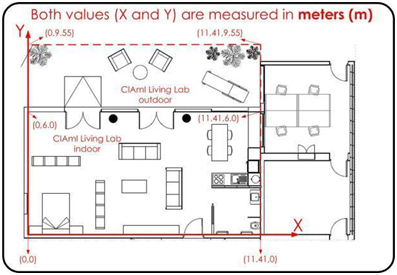
The installation phase of SNTUmicro is shown in the pictures below.

Team name: AIT
AIT Austrian Institute of Technology, Austria
The AIT localization system exploits an array of 20 battery-powered, passive infrared sensors (PIR) from Eaton, connected via wireless data transmission to a host. The sensors have been deployed on the ceiling of the living lab. The exact position of the sensors is shown in the following map:
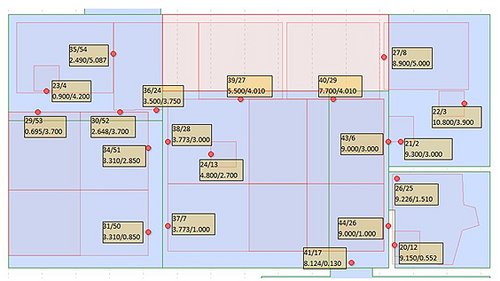
The following figures show a detail of the ceiling after the installation and the installation of the system.

Team name: GEDES-UGR
University of Granada, Spain
The GEDES-UGR system exploits a number of radio beacon emitters based on ZigBee, and a wearable sensor also based on ZigBee. A beacon sensor is shown in the picture below.
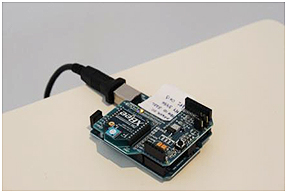
In total 7 beacon sensors have been deployed on top of different pieces of furniture (in the bathroom, on the bedside table, on the bookshelf, on the kitchen, and on 3 consoles):
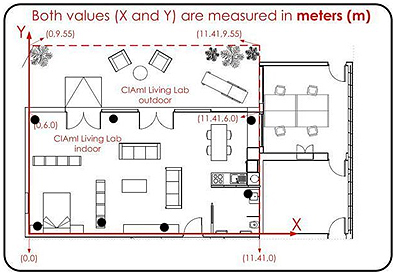
The pictures below show some details of the installation.

Team name: iLoc
Lucerne University of Applied Sciences and iHomeLab and Stuttgart University of Applied Sciences
The iLoc localization system is based ultrasound ranging. It exploits an array of 28 ultrasound detectors nodes, and wearable ultrasound emitter. The detectors are connected among themselves and to the host by means of a wired network connection, as shown in the picture below.
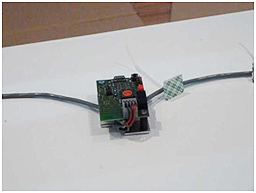
The detectors are deployed in an array on the ceiling of the living lab, according to the following map:

The following photos show some phases of the installation of iLoc.

Team name: n-Core Polaris
University of Salamanca, Spain
n-Core Polaris exploits a number of Received Signal Strength detectors based on ZigBee, and a wearable beacon emitter also based on ZigBee. The wearable device is shown in the picture below.

A number RSS detectors have been deployed on the walls at about 15 cm from the ground, in order to guarantee a good coverage of the entire area of the living lab. The pictures below show some details of the installation.

Team name: OwlPS
University of Franche-Comte, France
OwIPS exploits 4 access points IEEE 802.11 runing the owlps-listener software, and one wearable node also based on IEEE 802.11. The 4 access points are placed in correspondence of the 4 black dots in the map:
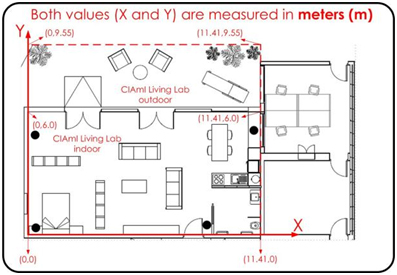
The figure below shows the access point deployed in the kitchen.
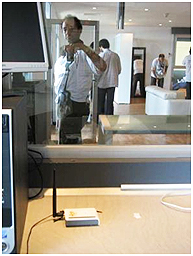
Team name: CapFloor
Fraunhofer IGD, Darmstadt, Germany
CapFloor exploits a number of capacitive carpets deployed on the ground in order to cover (almost) all the surface of the living lab. The following pictures show the installation phase of CapFloor:


